illegal immigration
UN Budgets Millions for U.S.-Bound Migrants in 2024
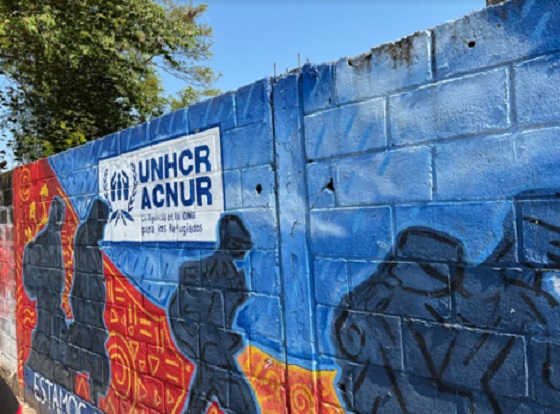
As this mural in Tapachula, Mexico, shows, UN agencies are well aware that their cash aid and assistance helps support illegal immigration over the U.S. southern border. January 2022 photo by Todd Bensman.
From the Center for Immigration Studies
By Todd Bensman
Public docs show cash handouts to help feed, transport, and house people headed for the U.S. border
Early on in America’s historic border crisis, now entering its fourth record-smashing year, some Republican lawmakers named a significant enabling culprit other than the usual Mexican cartel smugglers. They named the U.S. taxpayer-funded United Nations as essentially a co-smuggler after seeing my reports that the UN was handing out debit cards and cash vouchers to aspiring illegal border crossers on their way north.
One outraged group of 21 border-security-minded lawmakers even pitched a bill that would require the United States, the UN’s largest donor, to turn off the taxpayer money spigot. H.R. 6155 never caught fire, though, in no small part because “fact checks” claiming to debunk other reports like mine in the conservative press dissuaded broader media interest and left the American public in the dark.
But now the UN’s 2024 update to the “Regional Refugee and Migrant Response Plan” (RMRP for short), a planning and budget document for handing out nearly $1.6 billion in 17 Latin America countries, can cast a broad confirming light on the cash giveaways and much more aid for 2024 ahead — with the helping hands of 248 named non-governmental organizations. Despite the RMRP plan title naming Venezuelans as recipients of this aid operation, the document’s fine print (footnote on p. 14 and paragraph on p. 43, for instance) says the largesse goes to “all nationalities” and “multiple other nationalities”.

A Haitian shows his UN cash card outside a UN facility in Tapachula. He was there to complain the agency had not deposited money in the depleted card. January 2022 photo by Todd Bensman.
The documents clear up any mystery about what the UN and NGOs are doing on the migrant trails and leave no room for supposedly debunking “fact checks”.
In a nutshell, the UN and its advocacy partners are planning to spread $372 million in “Cash and Voucher Assistance (CVA)”, and “Multipurpose Cash Assistance (MCA)” to some 624,000 immigrants in-transit to the United States during 2024. That money is most often handed out, other UN documents show, as pre-paid, rechargeable debit cards, but also hard “cash in envelopes”, bank transfers, and mobile transfers the U.S. border-bound travelers can use for whatever they want.
The $372 million in planned cash giveaways to the 624,000 immigrants moving north and illegally crossing national borders “represents a significantly greater share of the financial requirements” for 2024, the RMRP says, but it is still only one part of much broader UN hemisphere-wide vision that aims to spend $1.59 billion assisting about three million people in 17 countries who emigrated from their home nations. Most will be “in-destination” recipients already supposedly settled in third countries, albeit in declining numbers, but a rising share of cash will go to the spiking numbers of “in-transit” immigrants launching journeys from those accommodating countries north to the United States.

Cash cards going out to immigrants in long lines at a camp in Reynosa, Mexico, in September 2021, photos that first drew ostensibly debunking fact checks. Photos by Todd Bensman.
Without distinction, both populations get access to UN cash but also “humanitarian transportation”, shelter, food, legal advice, personal hygiene products, health care, and “protection” against threats like human smuggling, and much more besides cash in envelopes or debit cards.
The cash handouts will be in the mix during 2024 as the UN and its private partners incorporate an “increased use of CVA” in, for instance, the $184 million it plans to provide 1.2 million people, $122 million for rent support and also “temporary collective shelter” for 473,000 people, and $25.8 million for “humanitarian transportation” to 129,000 people crossing borders. There’ll also be “expanded use of multi-purpose cash” for those claiming “gender-based violence”.
The UN’s 2024 Game Plan
The 130-page UN-spearheaded RMRP 2024 update went public in December and is readily accessible online, as is the original 2023-2024 plan it revises — sharply upward. It is the latest since the United Nations High Commissioner for Refugees and the UN’s International Organization for Migration started the program in 2018, originally for Venezuelans but now open to anyone in 17 nations of Latin America and the Caribbean. (For the complete list of involved groups, see p. 268, here, and explore their activities further with this handy interactive tool).
Some 57 international organizations would manage the handouts of $273 million, while 132 “national NGOs” and “civil service organizations” would handle $70 million in aid. Fifteen UN agencies would get the lion’s share at $1.2 billion.
The NGOs actively participated in crafting the RMRP 2024 Update, which amends a 2023-2024 plan released back in 2022 that at the time foresaw a decline in illegal immigration after 2023. It increased, instead.

A Nicaraguan on his way to the U.S. showed his UN cash card in Monterrey, Mexico. January 2022 photo by Todd Bensman.
“Country-level projections of in-transit movements for populations moving north through Central America and Mexico have been revised sharply upwards,” p. 44 explains in updating the 2024 RMRP update.
The reasons given include factors like “xenophobia” leading resettled migrants to leave for the United States. It does, finally, tag the real culprit: U.S. policies that created “newly established opportunities for regular pathways to move to the United States of America” for those who could make their way to northern Mexico.
The document makes clear in writing that the UN and these partners know their endeavor aids, abets, and makes possible the “onward movement” of immigrants who intend to illegally cross borders, especially to get into the United States.
None of them care. Twenty new groups joined the UN endeavor for 2024 for a total of 248.

Their plan frequently acknowledges the illegality, saying for instance, that one in three of the Venezuelan migrants the UN aims to help are in “irregular situations”, including those “who have crossed international borders without complying with all the legal and administrative requirements for entry and may not have the required documentation to do so”, as well as visa overstayers. The original 2023-2024 plan even spelled out that “special attention will be given to the use of [cash and voucher assistance] for in-transit populations, including the need for comprehensive solutions throughout the journey”.
The only expression of apparent concern about supporting people clearly intending to break U.S. law shows up on a page depicting a map with the thin red line of a migration route leading to the U.S. border at about El Paso. Someone took the trouble to add a footnote on that page noting that the map “does not imply official endorsement or acceptance by the UN”.

UN workers help long lines of immigrants apply for aid in Tapachula, Mexico. Photos by Todd Bensman.
Why hand out hundreds of millions of dollars as cash and services to hundreds of thousands planning to illegally follow that red line through UN member states, to include crossing the US border, when those nations don’t like or want it and must bear the political controversies of it?
“To support access to asylum procedures, migratory regularization activities, and socio-economic integration”, the plan says.
The money handout program “has taken on increasing importance”, it explains elsewhere, because it gives growing numbers of immigrants “the flexibility to cover their expenses and needs they deem most urgent, increasing their dignity and autonomy”.
Where It’ll Be Doled Out
Over the past three years, I have visited UN waystations featuring long lines of U.S.-bound immigrants applying for aid from clipboard-wielding workers handing out cash cards and other goodies, from Reynosa and Monterrey in the north of Mexico to Tapachula in the far south. But the waystations also appear everywhere along the trails much farther south.
The RMRP plan calls for distributing most of the cash, cash equivalents, and vouchers to migrants in Colombia and Ecuador, which are launch pads that sent 450,000 people through the Darian Gap jungle passage in Panama. The plan calls for 24 NGO partners to give money to 95,000 in Colombia and 59,000 in Mexico.
Some of the so-called transportation assistance is for local cab rides to stores or doctor appointments. But the UN agencies also know that aid will facilitate “increased onward movements” between countries of the “in-transit population” for 105,000 immigrants in Colombia, 25,000 in Brazil, 13,000 in Panama, and 3,700 in Mexico, to name a few places.
Likewise for “shelter”, $27.5 million is earmarked for 161,000 travelers in Colombia, $22.5 million for 179,000 in Ecuador, $18 million for 165,000 in Peru, and $4.3 million to help 33,000 in Mexico.
Political Fight or Flight
In years one and two of the historic mass migration crisis that President Biden’s let-them-all-in policies triggered, Republicans in the U.S. House of Representatives spoiled for a political fight over UN and NGO activity along the migrant routes because it was funded largely and ironically by the United States. And not just them. In December 2022, Texas Gov. Greg Abbott wrote Attorney General Ken Paxton asking him to investigate whether non-governmental organizations unlawfully assisted mass border crossings that overwhelmed the El Paso region.
Recent Congressional Research Service reporting reminds us that they had some legitimate grounds to complain; the United States has been the largest financial contributor to UN entities since the UN was established in 1945. Congress and the executive branch play key roles; Congress appropriates U.S. funding, while the executive branch shapes where the money will go through the State Department and the U.S. Mission to the United Nations in New York City.
Complaints, questions, and proposed legislation about the UN’s role in all of this may have gone cold, but as the latest RMRP plan reveals, the world body is as hot on the trail as ever.
Prior to his government experience, Bensman worked on staff for The Dallas Morning News, CBS, and Hearst Newspapers, covering the FBI, federal law enforcement and serving on investigative teams. He reported extensively on national security issues after 9/11 and worked from more than 25 countries in Latin America, the Middle East, and Africa. In Texas, he authored long-form investigative stories with emphases on border security related to illegal immigration and Mexico’s drug war. His reporting on human smuggling from Muslim-majority countries, Mexico’s drug war, and cross-border gun smuggling to cartels earned two National Press Club awards and an Inter-American Press Association award, among others.
illegal immigration
Suspected Terrorists Illegally Entering US Up Over 2,500% Under Biden From Trump Era

 From the Daily Caller News Foundation
From the Daily Caller News Foundation
The number of suspected terrorists entering illegally into the U.S. has spiked over 2,500% since the previous administration, according to the latest federal data.
Border Patrol agents apprehended a total of 367 individuals at the southern and northern borders between fiscal years 2021 and 2024 whose names appeared on the terror watch list, according to the latest data released by Customs and Border Protection (CBP). The number marks a roughly 2,521% increase from the 14 suspected terrorists caught between ports of entry in fiscal years 2017 to 2020.
There were 80 Border Patrol encounters of suspected terrorists at the U.S.-Mexico border in the first seven months of the current fiscal year, while there were only 11 caught by agents during President Donald Trump’s White House tenure from fiscal years 2017 to 2020, the data shows.
The latest numbers follow several high-profile encounters with suspected terrorists at the border, with some being allowed to roam free into the country.
Mohammad Kharwin, an Afghan national, was placed into a government monitoring program after illegally crossing the U.S.-Mexico border near San Ysidro, California, in 2023. He was almost immediately taken off the program, known as Alternatives to Detention, and was able to roam free in the country for nearly a year until it was discovered that he had potential ties to Hezbo-e-Islmi, a U.S.-designated terrorist organization.
A Pakistani national illegally crossed the southern border in November 2023 and was a confirmed match for a name on the terror watch list. The terror suspect was also placed into the Alternatives to Detention program for a day before being put back into physical detention.
The latest immigration data also reveals the record number of Chinese nationals entering the U.S., which Republican lawmakers argue present another security risk for the country.
A total of 27,583 Chinese nationals unlawfully crossed into the U.S. over the past seven months of fiscal year 2024 — surpassing the 24,125 who illegally crossed in fiscal year 2023 and exceeding the 1,987 who illegally entered in fiscal year 2022, the CBP numbers show.
Crime
The US Canadian border: Greatest number of terrorist watch list individuals being apprehended at northern border

A Border Patrol agent standing watch at the Montana-Canada border in the CBP Spokane Sector. The Spokane Sector covers the U.S.-Canada border along the northwestern section of Montana, part of Idaho, and the eastern part of Washington.
From The Center Square
Lack of operational control at northern border poses national security threats
The northern border largely has been unmanned and understaffed for decades as federal reports issue conflicting conclusions about how much, or how little, operational control exists.
Some officials have suggested the U.S. Department of Homeland Security has just 1% operational control over the northern border after a 2019 General Accounting Office audit of U.S. Customs and Border northern border operations. But a December 2022 DHS report claimed, “The Border Patrol is better staffed today than at any time in its 87-year history,” noting no surveillance of extensive parts of the northern border existed prior to 9/11.
After 9/11, several federal agencies were combined to fall under the newly created Department of Homeland Security. Within 20 years, roughly 950 miles along the U.S.-Canada border from Washington to Minnesota, and roughly 200 miles along the northern border in New York and Lake Ontario, were under unmanned aircraft surveillance. None of these areas “were covered prior to the creation of DHS,” DHS says, meaning the northern border was largely unprotected since Border Patrol’s founding in 1924.
In 2012, DHS released its first unified department strategy for U.S.-Canada border security, prioritizing “deterring and preventing terrorism and smuggling, trafficking, and illegal immigration; safeguarding and encouraging the efficient flow of lawful trade, travel, and immigration; and, ensuring community resiliency before, during, and after terrorist attacks and other disasters.”
Within 10 years at the northern border, more than 2,200 Border Patrol agents were stationed between ports of entry; nearly 3,700 CBP officers were stationed at ports of entry; more than 35 land ports of entry were modernized; and thermal camera systems, mobile and remote video surveillance systems had been deployed.
Havre Sector Border Patrol agent patrolling northern border on an ATV. The Havre Sector covers the U.S.-Canada border along most of Montana’s northern border, and includes part of Idaho and all of Wyoming, Colorado and Utah.
Despite these improvements, “the northern border is under-resourced by far compared to the southwest border,” former Border Patrol chief Mark Morgan told The Center Square. “But at the same time, it still represents significant threats. Cartels are expanding their operations, flying people into Canada, which doesn’t require a visa, presenting an opportunity for terrorist watch-listed individuals to exploit. It’s much easier to get to Canada to come across.”
“Data from 39 months shows terrorist watch-listed individuals are coming here every day and they aren’t stopping,” Morgan added.
For years and prior to the current border crisis, there weren’t enough personnel to cover all shifts, and the infrastructure, technology and equipment afforded to them didn’t compare to those at the southwest border, he said. People can easily drive snow mobiles over frozen territory or boats across the Great Lakes in areas that are unmanned, Morgan said, with a previous policy of self-reporting to authorities.
“The northern border represents a threat,” Morgan said. Noting it only took 19 men to carry out the 9/11 terrorist attacks, Morgan has warned that a terrorist threat is already in the U.S. No one knows how many terrorist watch-listed individuals have illegally entered who weren’t caught, multiple officials have told The Center Square.
While much attention has focused on the southwest border, the greatest number of known or suspected terrorists to ever be apprehended in U.S. history were at the northern border in fiscal 2023, breaking fiscal 2022’s record, The Center Square first reported.
This fiscal year through April, the greatest number of KSTs (known or suspected terrorists) continue to be apprehended at the northern border, 143 so far, according to CBP data.
Potential terrorist threats are not new and have persisted for some time, federal reports indicate. One Border Patrol intelligence report says terrorist threats potentially come from “foreign violent extremists to exploit established alien smuggling routes and networks for the purpose of evading detection en route to the United States.”
Other threats include drug smuggling from Canada into the U.S., connected to “criminal groups with known ties to or hired by Mexican drug trafficking organizations” and human smuggling. In the last few years, human smuggling attempts and apprehensions have significantly increased, The Center Square has reported.
The Center Square first began reporting on northern border national security threats several years ago. Since then, apprehensions of illegal border crossers in the first six months of fiscal 2024 were the highest on record. In the busiest sector of Swanton, Border Patrol agents recently apprehended more people in one week than they did in all of fiscal 2021.
Last month, they apprehended more than 1,400 illegal border crossers, more than they did in fiscal years 2021 and 2022 combined, Swanton Sector Chief Border Patrol Agent Robert Garcia just announced, saying it was “another record-breaking milestone in northern border history.”
This is after they apprehended more than 6,700 in fiscal 2023, more than the apprehensions of the previous 11 years combined, The Center Square first reported.
The U.S.-Canada border is the longest international border in the world of 5,525 miles. Unlike the U.S.-Mexico border, there are no border walls or similar barriers along the U.S.-Canada border. Through DHS, CBP officers are tasked with border security at ports of entry and Border Patrol agents between ports of entry along 4,000 miles. The U.S. Coast Guard, working with CBP’s Air and Maritime Operations, covers maritime security.
-
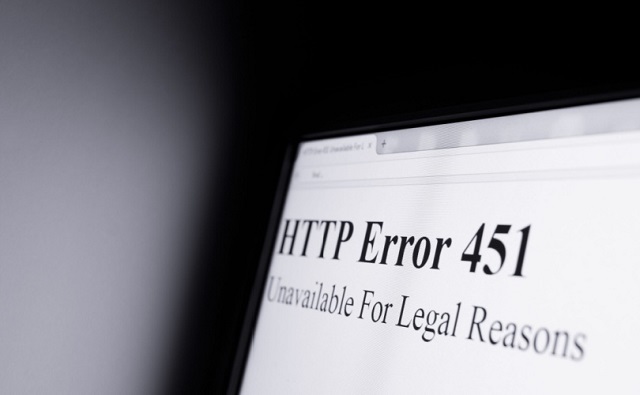
 National2 days ago
National2 days agoTrudeau’s internet censorship Bill C-11 will not be implemented until late 2025
-
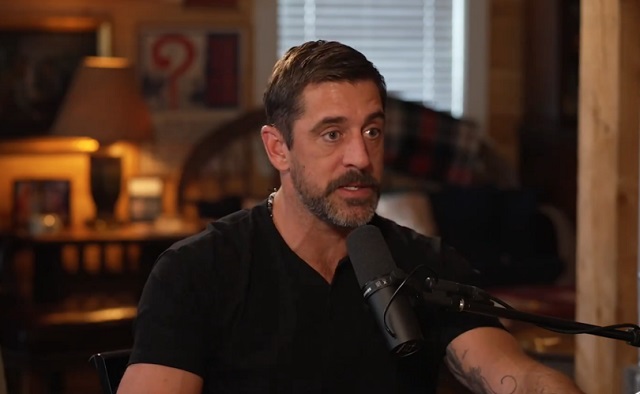
 COVID-191 day ago
COVID-191 day agoTucker Carlson and NFL star Aaron Rodgers discuss Bill Gates, COVID-19, US Deep State
-

 Energy2 days ago
Energy2 days agoTech giants’ self-made AI energy crisis
-

 Frontier Centre for Public Policy2 days ago
Frontier Centre for Public Policy2 days agoThe PM as Leaf’s coach
-
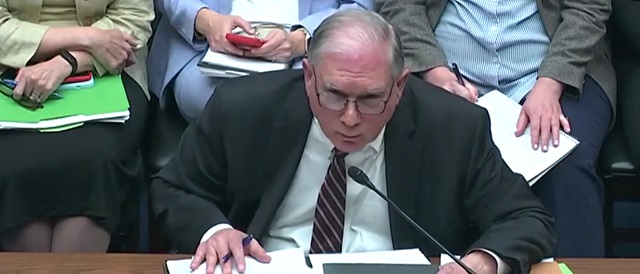
 COVID-1917 hours ago
COVID-1917 hours agoTop Fauci Aide Allegedly Learned To Make ‘Smoking Gun’ Emails ‘Disappear,’ Testimony Reveals
-
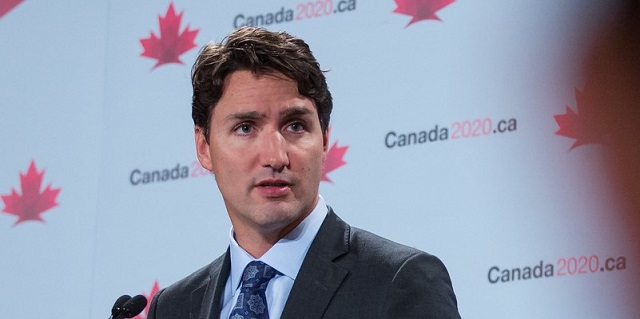
 Economy1 day ago
Economy1 day agoPrime minister’s misleading capital gains video misses the point
-

 COVID-1911 hours ago
COVID-1911 hours agoThe Vials and the Damage Done: Canada’s National Microbiology Laboratory Scandal, Part II
-

 espionage2 days ago
espionage2 days agoThe Scientists Who Came in From the Cold: Canada’s National Microbiology Laboratory Scandal, Part I








